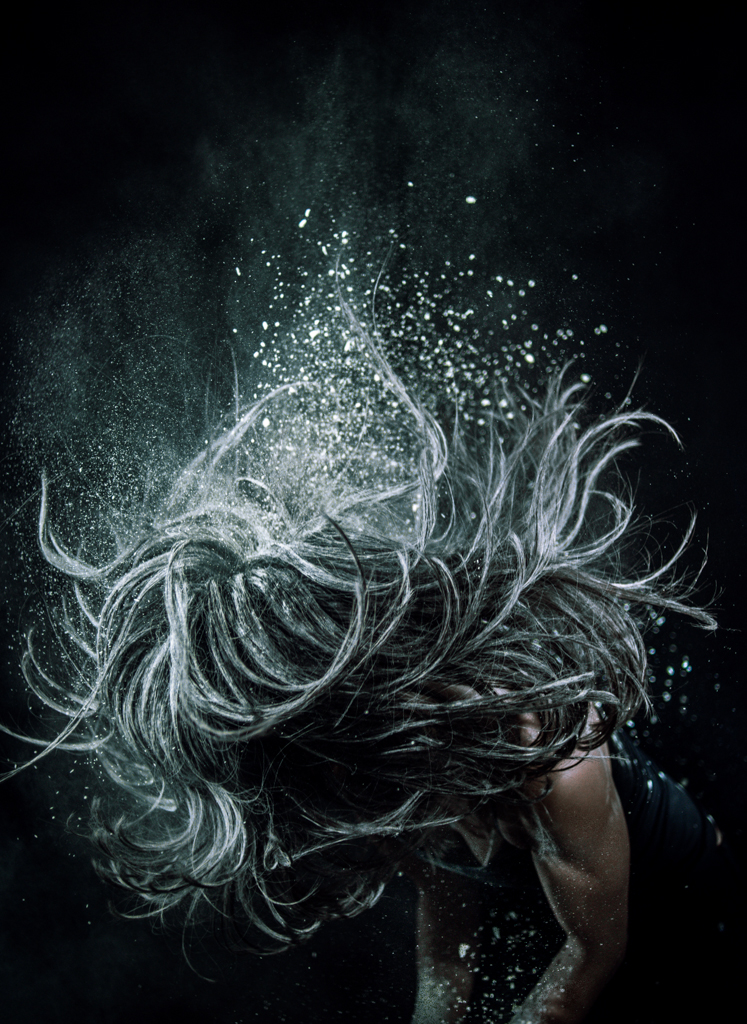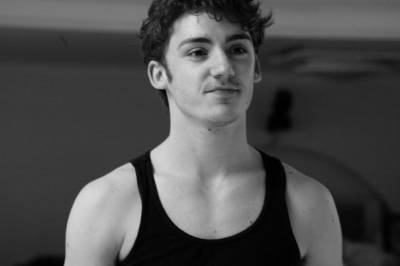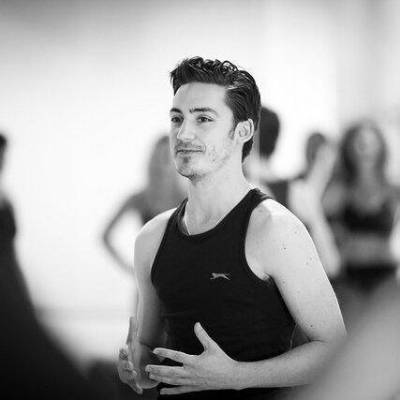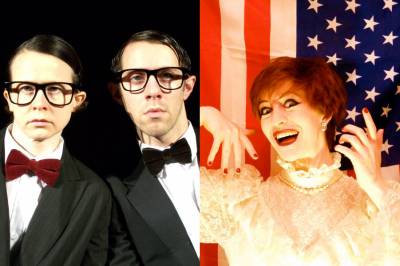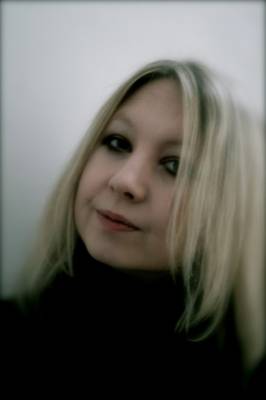- Details
-
Category: Interviews
-
Published: Thursday, 10 November 2011 11:39
-
Written by Celia Moran
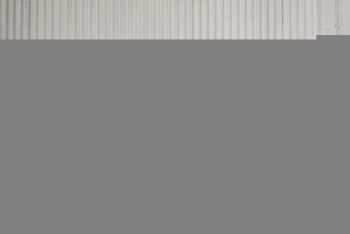
Photo:Jonathan Price
Scarlett Perdereau’s entry into dance was in no way out of the ordinary, or much different to millions of little girls the world over. As a young girl who also regularly “put on little shows for my parents”and donned a pink crossover cardigan for ballet class, I can confirm that this is very much standard procedure for wannabe Darcey Bussells. However, it would seem that the various twists and turns experienced by French-born Perdereau have been the making of her so far extraordinary dance career………
What was your pathway in to dance?
My pathway into a professional career in dance was quite meandering and not straightforward at all, but my pathway into dance was there from the moment I could move! The story is pretty classical from the beginning: starting dance from the age of barely four with ballet of course, a lot of ballet. Then moving onto what is called “modern jazz” in France, a combination of modern dance and jazz.
That was my whole childhood and my whole adolescence, just going to classes as much as I could outside of school and performing in little shows, and thinking about wanting to work in dance/be a dancer. However, I was also bought up believing that it’s important to study, and nourish the mind as well as the body.
Yes, I have seen that you did not follow the traditional ‘dance school route’.
Because I was interested in literature, I went to University in France and studied English. I still went to my dance classes as often as I could on the side, but I was also trying to secure my future. Through literature, I got into theatre and drama, which brought me to London to start working on a Masters which I didn’t finish because by then, I had decided to audition for acting schools. I was drawn to the Central School of Speech and Drama, as it seemed a bit experimental, but also very well-established. I did a degree there training to be an actor, but the course also had a very strong movement component. We did a lot of things ranging from martial arts to Laban analysis, but obviously relating it to the work of actors. Of course, I also enjoyed the work on text and voice but nevertheless, I still kept going to dance classes. It was really hard work, but I dragged myself to classes, especially at The Place.
After graduating, I got involved, almost naturally, in physical theatre kind of work, as well as international stuff. Being French and fitting in an international context worked well for me, and the sort of companies that do international theatre work was where I fitted in at the time. I also got into butoh.I think gradually, I realised that the less I talked, the happier I was. I felt better in scenes where I expressed myself through the body, even in stillness. That got me questioning whether I should face the fact that I should go back to my first love, which had never left me actually. Recognising that, I made the deliberate decision to retrain myself independently. It was about me building up technique, experience and a CV in dance. Little by little, the things I auditioned for were less and less text- and theatre-based, and more and more dance.
When I saw your education history, I did wonder what drew you back to dance, but obviously, it was just a natural progression.
Yes, well there is always more than one side to a person. It’s funny because I have a lot of dancers as friends, and you see it a lot in the profession: people who train as dancers and then through their mid-twenties/early thirties perhaps, they realise that they want to go into acting. The way I see it, your twenties are there to experiment and to realise that what you’re meant to do isn’t necessarily what you studied, however it still feeds you.
So, what made you want to dance?
I would have to bring it back to a very primitive, childlike pleasure, and a sheer joy for just expressing myself. Not even expressing something deep or meaningful, just using my body. And for me, actually the pleasure of making dances actually came hand in hand with the pleasure of dancing itself very early on.
Looking through your portfolio of work, it’s very varied. Is there ever a common thread to your inspiration or the way you work?
That’s a question I’m still in the process of asking myself. Part of doing my Masters at The Place was me trying to find answers in a context that would support me. As a performer, I’ve done a lot of different stuff, which is great, as I think you learn so much from all the different styles. As a choreographer, I’m still in the process of defining the type of pieces I like to make, and that’s why it’s varied because I’m still experimenting. At the moment, I would say I’m not into dramatic storytelling as a choreographer at all. If I’m going to tell a story, I’d rather actually work on a play with someone, or a film. For me, dance has got the advantage or limitation (depending on what you want to do with it) of being able to physicalise metaphors. So, you can work on a very poetical, abstract level that you can’t with words necessarily. That’s what I like to explore in dance. The kind of work I like to make is to use the body to reveal things that you wouldn’t otherwise be able to reveal.I like to keep stories at a very ambiguous and poetical level to let the audience do a bit of work. They are spoonfed too much in other types of work. Working with film has opened up a lot of possibilities and I’d definitely like to explore that further.
So, you were Arthur Pita’s assistant for The Metamorphosis, how did this opportunity arise?
A bit out of the blue! Or you could say, in retrospect, maybe it wasn’t so random. He had just choreographed me and the group I was studying with at The Place. He choreographed a piece onto us for the graduation show, so I danced in this. The piece was devised with and for us, so he knew me through this rehearsal process and my input, as well as everybody’s input as dancers. He said that he enjoyed working with me and that he enjoyed how I responded physically as a dancer to the propositions he made and the material I contributed. But, he also knew I was interested in choreography from my background and the studies I did. He’d been planning The Metamorphosis for ages, unaware that he had budget for an assistant until the Linbury Studio team informed him that there was money available for one. He had never used an assistant before, so this was very new for him and quite last-minute. So he phoned me and asked me to join him because he knew he could use me as a dancer to understudy several parts, and also to contribute to the movement material.
What do you think you learnt from this? Was there anything you learnt that you don’t think you could have learned through choreographing by yourself?
It was such a different role. Being an assistant is so different to being a dancer, and to being a choreographer. I learnt a lot of things just from shadowing Arthur, he‘s really wonderful to work with. You can be under a lot of pressure as a choreographer, and of course, the higher the stakes, the more pressure there is. And this was quite a big deal of a show. I think he was rewarded with the success that he deserved because he worked hard at it and it meant a lot to him, of course. But even though there was all that pressure, and you’re working with people from so many different backgrounds: there were Royal Ballet dancers, someone from Candoco who has done a lot of contemporary dance, and others who had worked with Matthew Bourne. To be able to keep everybody curious and wanting to keep working hard is a difficult task. Yet Arthur never fails to be polite and fun, because choreographers can become quite on edge and snappy as you get closer to the performance time. I’ve never seen him lose his cool. That’s a great lesson to learn, you know. You get the best out of people if you’re nice to them, it’s as simple as that as a choreographer. In his case, it was not just a case of getting the best out of the dancers, but out of a huge stage management team, and producers. It’s really important to keep a good relationship with everybody.
What did the role entail?
It was not as much responsibility on my shoulders as I previously thought, but it left me in a very privileged position to observe. It was a very open role, but, for the most part, you’re liaising between the dancers and the choreographer. You’re in a very crucial,but sometimes, an awkward position. Sort of a buffer zone. With Arthur it was a pleasure and I’d do it again, no question but, it can be an unrewarding or tough job in other circumstances, I’m sure!
Is there anything you wished you knew before you started out in the dance industry?
It’s hard to say, because now I’m in a position where it all seems so obvious. But the discipline which I got from ballet and demanding academic studies, for example, is something you have to have yourself otherwise you’ll never manage to achieve anything. I mean the discipline of the body of course, but also a mental discipline. I’ve always been very driven. Even when I was studying other things, I always made myself get up early or go home late so that I could go to those dance classes. So really, that discipline imposed itself because I was so driven. You have the responsibility to keep your body and your creative juices fit and ready to go. But, I felt that very early on and I understood that.
Some advice I could give would be to keep yourself busy during times of unemployment. Do classes and workshops etc so it doesn’t feel like a waiting game. Keep yourself active in between jobs so you never feel that you’re at the mercy of the audition calls out there. You have to cultivate your sense of self, your personality and your sense of values. Find out who you are as a person, as that’s what makes you stand out at auditions, as well as your ability to adapt. Live, travel, do other stuff that’s not dance! That will see you through those weird periods of not working and make you an interesting person to work with.
Finally, what are your goals and plans for 2012?
I’m doing a short project with Jonathan Burrows and Matteo Fargion at Siobhan Davies Studios in December with a sharing at the end. Alongside that, I’m doing my yoga teacher training. Yoga is a secret in my life, it’s my ‘me time.’So, I’ll be doing that throughout 2012 on the side of dance work. One of my long-term plans starting in 2012 is a project with my sister who is an actress in Paris. We’ve always talked about doing something together. So, I’m working on a dance theatre piece which would involve some text, either recorded or performed live, quite a lot of movement and possibly a film. Hopefully this will be something that can grow between London and Paris if we can get funding on both sides of the channel. 2012 is definitely the R & D and funding-hunting year!
That sounds great, thank you, Scarlett.


